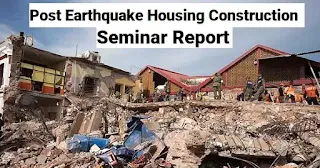A study of the construction methods used by various agencies in disaster-affected areas points to the growing use of local resources and talents in present-day relief and reconstruction measures. In the case of rural areas, the houses can be constructed by using traditional and locally available raw materials of bamboo, cane, reeds, rattans, willow, timber, and leaves of some particular trees, and has been designed to suit the traditional living habits of local people and maintain their socio-cultural heritage. Further, there has been a growing feeling amongst the rural peoples that the old bamboo-thatch or leaf houses may be constructed with newer materials of RCC, precast-components, etc., using better engineering information and thereby, achieving more durability as well as extra living comfort in the process.
Under these growing innovative concepts, concrete blocks, cement, wooden frames, and tiles that are locally made are most useful thereby encouraging many small-scale enterprises in the process. Although there seems to be a strong emphasis on the use of local resources in present-day relief aid, the important issue is not just the use of local resources, but how local manpower can be created. In most developing countries, the challenge is to organize and initiate measures that promote talent building. The seminar report presents a brief description of a few low-cost building materials, which can be used during post-earthquake housing construction.


0 comments